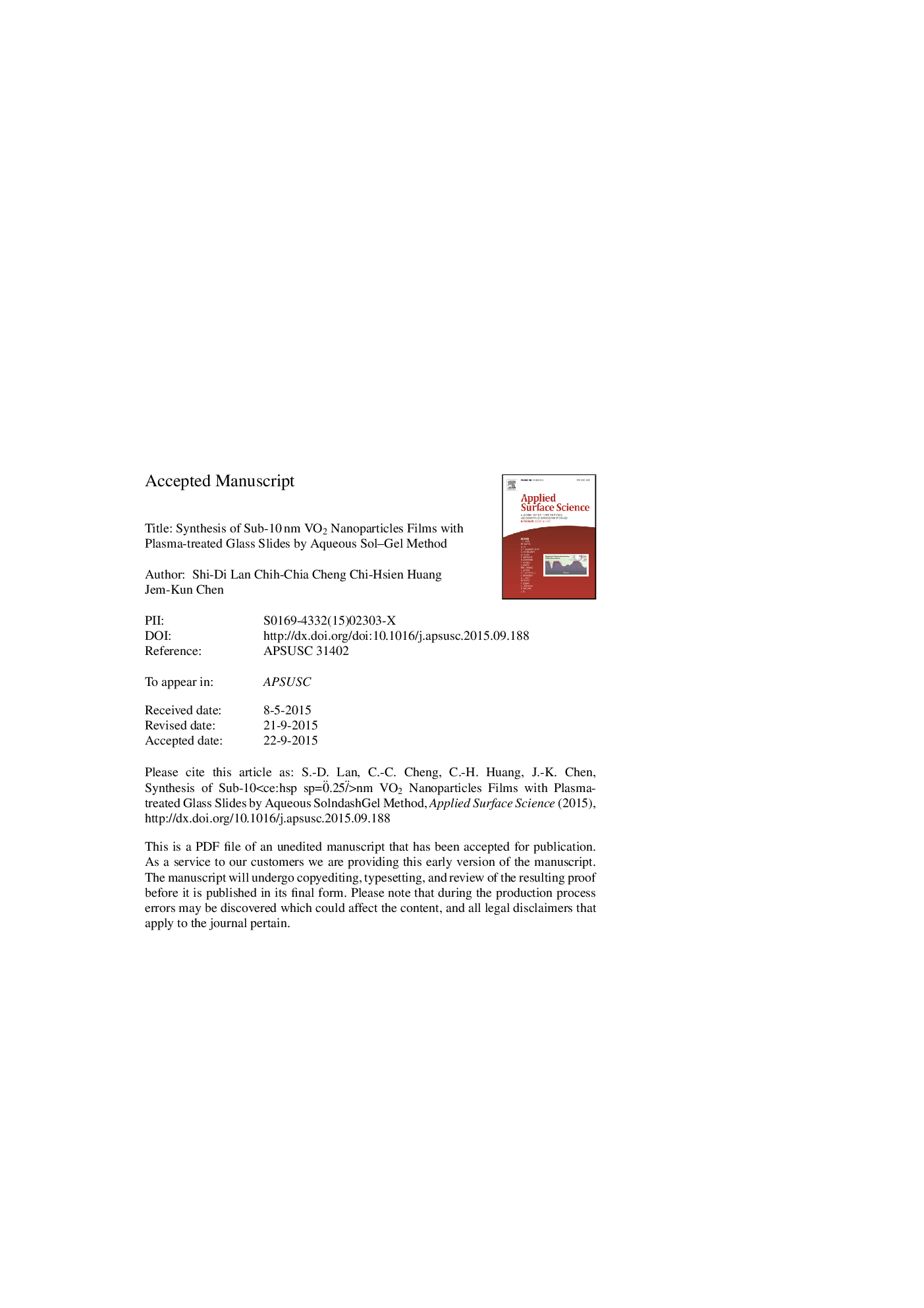| Article ID | Journal | Published Year | Pages | File Type |
|---|---|---|---|---|
| 5356303 | Applied Surface Science | 2015 | 37 Pages |
Abstract
This paper describes an aqueous sol-gel synthesis of thermochromic thin films consisted of vanadium dioxide nanoparticles (VNPs) on glass slides. The glass slides were treated by argon/oxygen plasma to generate dispersedly negative charge sites on the surface to attract VO2+ from a sol-gel solution. After heat treatment in a low-pressure carbon monoxide/carbon dioxide (CO/CO2) atmosphere, the VNPs could be generated in sub-10 nm of particle size on the surface. Various levels of doping were achieved by adding small quantities of a water-soluble tungsten compound to the sol; however, the particle size increased slightly with the tungsten doping levels. The change in electrical conductivity with temperature for VNP films were measured and compared to VO2 crystalline films. VNP films exhibited the lower transition temperature of the semiconductor to metal phase change; at a doping level of 4 wt% the transition temperature was measured at 32.2 ± 1.2 and 24.1 ± 1.2 °C for the VO2 and VNP films, respectively. The VNP films showed excellent visible transparency and a large change in transmittance at near-infrared (NIR) wavelengths before and after the metal-insulator phase transition (MIT). The current method is a landmark in the development of nanostructured material toward applications in energy-saving smart windows.
Keywords
Related Topics
Physical Sciences and Engineering
Chemistry
Physical and Theoretical Chemistry
Authors
Shi-Di Lan, Chih-Chia Cheng, Chi-Hsien Huang, Jem-Kun Chen,
